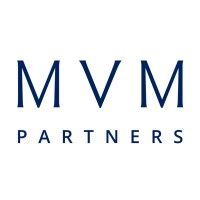The Complete Guide to Accounts Receivable Software: Features, Benefits, and Top Solutions
Jon Santillan
Apr 23, 2025

In today's fast-paced business environment, managing accounts receivable efficiently is critical to maintaining healthy cash flow and sustainable growth. Accounts receivable software has evolved from simple digital ledgers to sophisticated platforms that automate and streamline the entire invoice-to-cash process. This comprehensive guide explores the essential features, key benefits, and top solutions in the accounts receivable software market to help your business make an informed decision when selecting the right platform.
What is Accounts Receivable Software?
Accounts receivable software is a specialized financial technology solution designed to manage the process of tracking, collecting, and reconciling customer payments. These platforms automate many of the traditionally manual tasks involved in the AR process, from invoice generation to payment application and reconciliation. According to recent market research, the global accounts receivable automation market is projected to grow at a CAGR of 12.1% from 2023 to 2030, highlighting the increasing adoption of these solutions across industries.
As businesses seek to improve cash flow and reduce operational costs, the right accounts receivable software can transform financial operations by accelerating payment cycles, reducing administrative workload, and providing valuable insights into customer payment behavior.
Core Features of Modern AR Software
Modern accounts receivable platforms have evolved significantly, offering comprehensive functionality that addresses every aspect of the receivables process. Here are the essential features to look for:
Invoice Generation and Distribution
Advanced AR software enables automated invoice creation and distribution through multiple channels, including email, customer portals, and electronic invoice networks. These systems can:
- Generate customizable invoice templates with your branding
- Schedule recurring invoices for subscription-based services
- Distribute invoices based on customer preferences
- Track delivery and open rates for digital invoices
- Support multiple languages and currencies for global operations
Payment Processing and Reconciliation
Streamlined payment processing capabilities allow businesses to accept multiple payment methods and automatically reconcile them with outstanding invoices. Key features include:
- Integration with payment gateways and processors
- Support for ACH, credit cards, checks, and digital payment methods
- Automated cash application with matching algorithms
- Exception handling workflows for disputed or partial payments
- Batch processing capabilities for high transaction volumes
Customer Communications Management
Effective AR platforms include tools for managing customer communications throughout the collections process:
- Automated payment reminders and past-due notifications
- Customizable email templates for different scenarios
- Communication scheduling based on aging buckets
- Customer communication history tracking
- Self-service customer portals for payment and dispute management
Reporting and Analytics Capabilities
Data-driven insights help businesses optimize their receivables process through:
- Real-time dashboards with key AR metrics
- Aging reports and DSO (Days Sales Outstanding) tracking
- Customer payment behavior analysis
- Cash flow forecasting tools
- Customizable reporting options for different stakeholders
Integration with Accounting System
Seamless connectivity with existing financial systems ensures data consistency and process efficiency:
- Bi-directional syncing with ERP and accounting software
- Integration with CRM systems for customer data
- API capabilities for custom integrations
- Automated general ledger updates
- Real-time data synchronization
Benefits of Implementing AR Software
Implementing a robust accounts receivable software solution delivers significant benefits that directly impact financial performance and operational efficiency.
Reduced DSO (Days Sales Outstanding)
One of the most tangible benefits is the reduction in DSO, which measures the average time it takes to collect payment after a sale. Companies implementing AR automation typically report a 30-50% reduction in DSO, directly improving cash flow. This acceleration comes from:
- Faster invoice delivery through digital channels
- Automated follow-up on outstanding invoices
- Streamlined payment options for customers
- Earlier identification of potential collection issues
- More consistent application of collection processes
Improved Cash Flow Management
Beyond DSO reduction, AR software enhances overall cash flow visibility and predictability:
- Real-time insights into receivables status
- More accurate cash flow forecasting
- Reduced payment processing delays
- Earlier identification of credit risks
- Better working capital management
Decreased Manual Workload
Automation significantly reduces the administrative burden on finance teams:
- 60-80% reduction in manual data entry tasks
- Elimination of paper-based processes
- Automated reconciliation of payments
- Streamlined exception handling
- Reduction in payment application errors
Enhanced Customer Experience
Modern AR platforms improve the payment experience for customers:
- Self-service payment portals
- Flexible payment options
- Clear, professional invoices and statements
- Transparent payment history and status
- Easier dispute resolution processes
Better Financial Visibility and Forecasting
Comprehensive reporting tools provide finance leaders with critical insights:
- Real-time visibility into AR aging and status
- Predictive analytics for collection forecasting
- Customer payment behavior patterns
- Performance metrics for collections teams
- Data-driven decision support for credit policies
Types of AR Software Solutions
The accounts receivable software market offers various solution types to address different business needs.
Cloud-based vs. On-premise Solutions
Cloud-based AR platforms have become increasingly popular due to their accessibility, lower upfront costs, and automatic updates. These solutions offer:
- Subscription-based pricing models
- Accessibility from anywhere with internet connection
- Automatic updates and maintenance
- Scalability to accommodate business growth
Reduced IT infrastructure requirements
On-premise solutions remain relevant for organizations with specific security or compliance requirements:
- Greater control over data and security
- One-time licensing costs versus ongoing subscriptions
- Customization capabilities for specialized needs
- No dependency on internet connectivity
- Integration with existing on-premise systems
Enterprise vs. SMB-focused Platforms
Enterprise AR solutions are designed for large organizations with complex needs:
- High transaction volume capabilities
- Multi-entity and multi-currency support
- Advanced workflow automation
- Comprehensive integration capabilities
Extensive customization options
SMB-focused platforms offer more streamlined functionality at lower price points:
- User-friendly interfaces requiring minimal training
- Essential functionality without overwhelming complexity
- Simplified setup and implementation
- Cost-effective pricing models
- Standardized processes based on best practices
Specialized vs. All-in-one Financial Suites
Specialized AR software focuses exclusively on receivables management:
- Deep functionality specific to AR processes
- Purpose-built features for collections and cash application
- Typically more advanced AR-specific capabilities
- Often easier to implement as a standalone solution
May offer better integration with existing systems
All-in-one financial suites include AR as one component of a broader solution:
- Seamless integration across financial processes
- Consistent user experience across functions
- Single vendor relationship for multiple financial needs
- Potentially lower total cost for full financial suite
- Unified database across financial operations
Industry-specific Solutions
Some platforms are tailored to the unique requirements of specific industries:
- Healthcare AR solutions with insurance billing capabilities
- Manufacturing platforms with order management integration
- Professional services solutions with time tracking and billing
- Distribution industry features for high-volume transactions
- Retail-focused systems with point-of-sale integration
Top Accounts Receivable Software Solutions
When evaluating AR software, consider the following factors to determine the best fit for your organization:
Evaluation Criteria
- Ease of use and user interface design
- Implementation time and complexity
- Integration capabilities with existing systems
- Scalability to accommodate business growth
- Mobile accessibility for on-the-go management
- Customer support quality and availability
- Security features and compliance certifications
- Total cost of ownership (including implementation and training)
- Vendor reputation and financial stability
- Future development roadmap and innovation
Leading AR Software Solutions
OCTA Accounts Receivable Platform
Core Strengths:
- End-to-end accounts receivable automation solution
- Intuitive user interface designed for ease of use
- Advanced cash application with high matching rates
- Robust customer communication tools and portal
- Seamless integration with existing ERP systems
- Real-time analytics and customizable dashboards
- Rapid implementation with minimal IT resources
Limitations:
- Newer features may still be evolving
- Custom integrations may require professional services
- Best ROI achieved with comprehensive implementation
For more information, visit weareocta.com to explore their complete AR solution.
HighRadius Autonomous Receivables
Core Strengths:
- AI-powered cash application with high automation rates
- Advanced analytics and predictive capabilities
- Comprehensive order-to-cash platform
- Strong enterprise-level capabilities
- Extensive integration options
Limitations:
- Complex implementation may require significant resources
- Higher price point better suited for larger organizations
- May have more features than smaller businesses need
- Sage Intacct Accounts Receivable
Core Strengths:
- Strong cloud-based financial management suite
- Excellent multi-entity management capabilities
- Robust reporting and dashboards
- Streamlined workflow automation
- Strong integration with other Sage products
Limitations:
- May lack some specialized AR features of dedicated platforms
- Mid-market focus may not suit very small or very large organizations
- Less customizable than some enterprise alternatives
Billtrust Complete Credit-to-Cash Solution
Core Strengths:
- Comprehensive invoice-to-cash automation
- Strong electronic invoicing capabilities
- Excellent customer portal functionality
- Robust payment processing options
- Industry-specific configurations available
Limitations:
- Can be more expensive than simpler solutions
- Implementation complexity varies based on configuration needs
- May require process adjustments to maximize benefits
YayPay by Quadient
Core Strengths:
- User-friendly interface with modern design
- Strong predictive analytics capabilities
- Excellent customer communication tools
- Good balance of features for mid-market companies
- Machine learning for payment prediction
Limitations:
- Newer to the market than some competitors
- May lack some industry-specific features
- Integration depth varies by target system
Oracle Accounts Receivable Cloud
Core Strengths:
- Enterprise-grade functionality and scalability
- Strong multi-currency and global business support
- Comprehensive integration with Oracle ecosystem
- Advanced security and compliance features
- Robust workflow capabilities
Limitations:
- Complex implementation requiring specialized expertise
- Higher cost structure appropriate for larger organizations
- May require commitment to broader Oracle platform
Pricing Considerations
AR software pricing varies widely based on organization size, feature requirements, and implementation needs:
Subscription-based models: Typically range from $25-$150 per user per month for SMB solutions, with enterprise pricing often custom-quoted based on transaction volume and complexity
Implementation costs: Can range from minimal setup fees for simple cloud solutions to significant investments for enterprise implementations requiring customization
Training expenses: Consider both initial training and ongoing education for new features
Return on investment: Calculate potential ROI based on DSO reduction, staff efficiency gains, and error reduction
Total cost of ownership: Factor in all costs over a 3-5 year period for fair comparison
Implementation Best Practices
Successful AR software implementation requires careful planning and change management.
Planning and Team Preparation
- Establish clear objectives and success metrics
- Document current processes and identify improvement opportunities
- Assign a cross-functional implementation team
- Secure executive sponsorship and support
- Develop a realistic timeline with milestones
Data Migration Strategies
- Audit and clean existing customer and invoice data
- Establish data mapping and transformation rules
- Perform test migrations before final cutover
- Validate data accuracy after migration
- Maintain historical data access during transition
Training and Adoption Considerations
- Develop role-based training programs
- Provide both initial and ongoing education
- Create quick reference guides for common tasks
- Establish internal champions to support the team
- Monitor usage metrics to identify adoption challenges
Integration with Existing Systems
- Document all required integration points
- Establish clear data synchronization rules
- Test integrations thoroughly before go-live
- Create contingency plans for integration issues
- Establish ongoing monitoring of data flows
Conclusion: Selecting the Right AR Software for Your Business
Choosing the right accounts receivable software is a strategic decision that can significantly impact your organization's financial health. By focusing on your specific business requirements, integration needs, and growth plans, you can select a solution that delivers both immediate efficiency gains and long-term strategic value.
Begin by assessing your current AR processes, identifying pain points, and establishing clear objectives for improvement. Consider factors such as transaction volume, customer base complexity, industry-specific requirements, and existing technology infrastructure. Involve key stakeholders from finance, IT, and operations to ensure all perspectives are considered.
Most importantly, view AR software as an investment rather than an expense. The right solution can deliver substantial ROI through reduced DSO, lower operational costs, improved customer relationships, and better financial visibility. In today's competitive business environment, efficient receivables management isn't just about maintaining cash flow—it's about creating a strategic advantage that supports sustainable growth.
Start by evaluating your current accounts receivable processes today to identify opportunities for automation and improvement. The right AR software solution can transform your financial operations and position your business for success in an increasingly digital economy.















